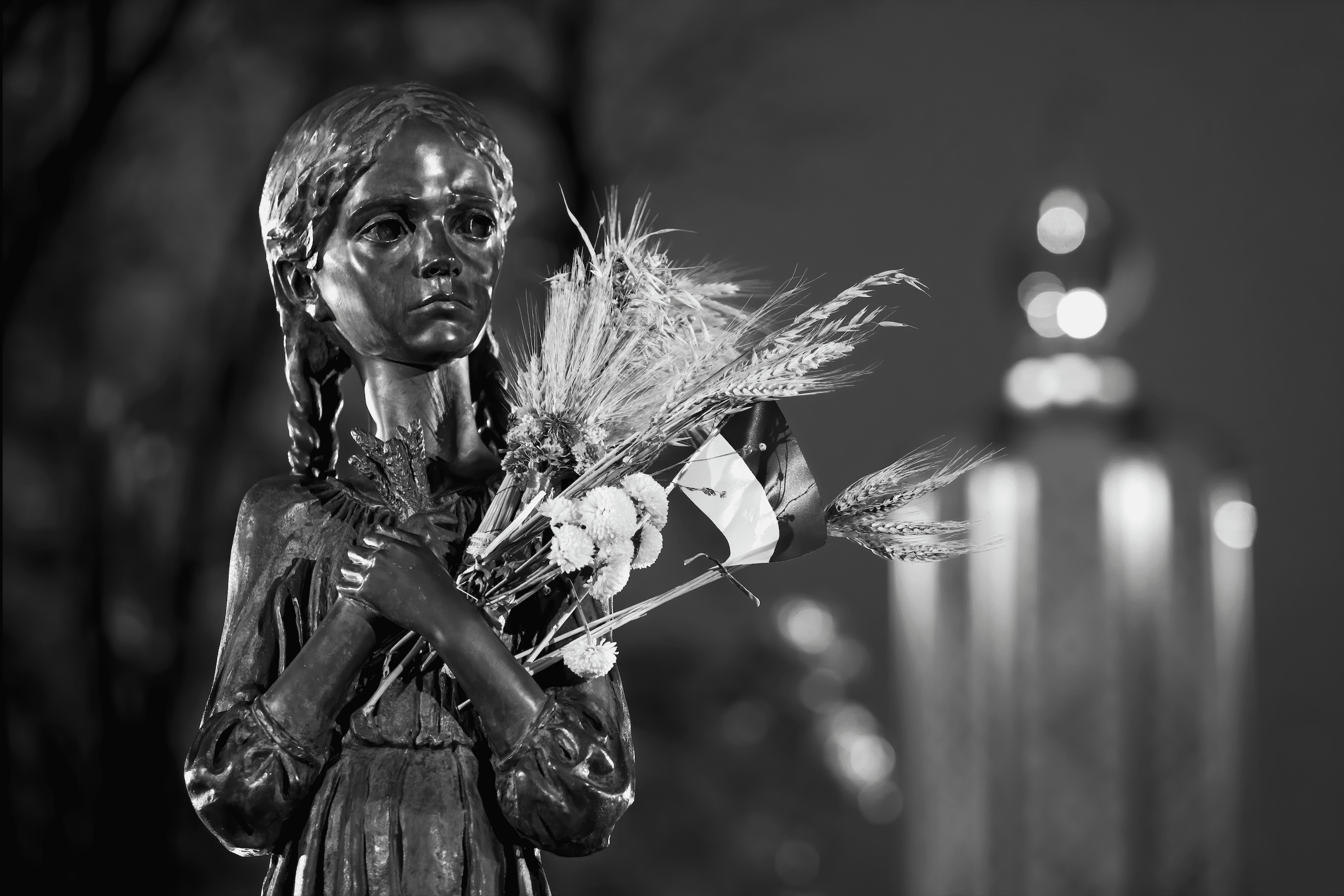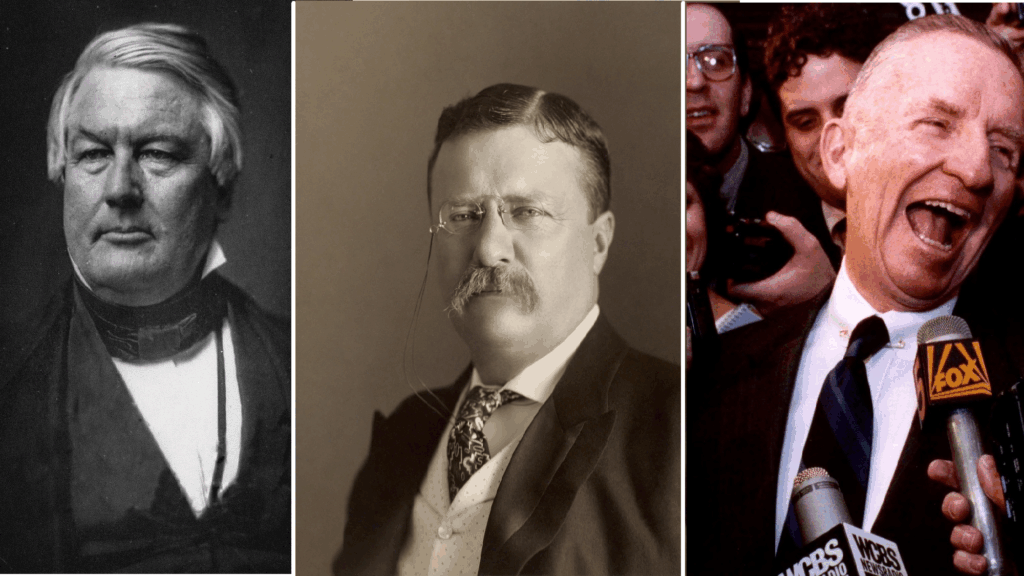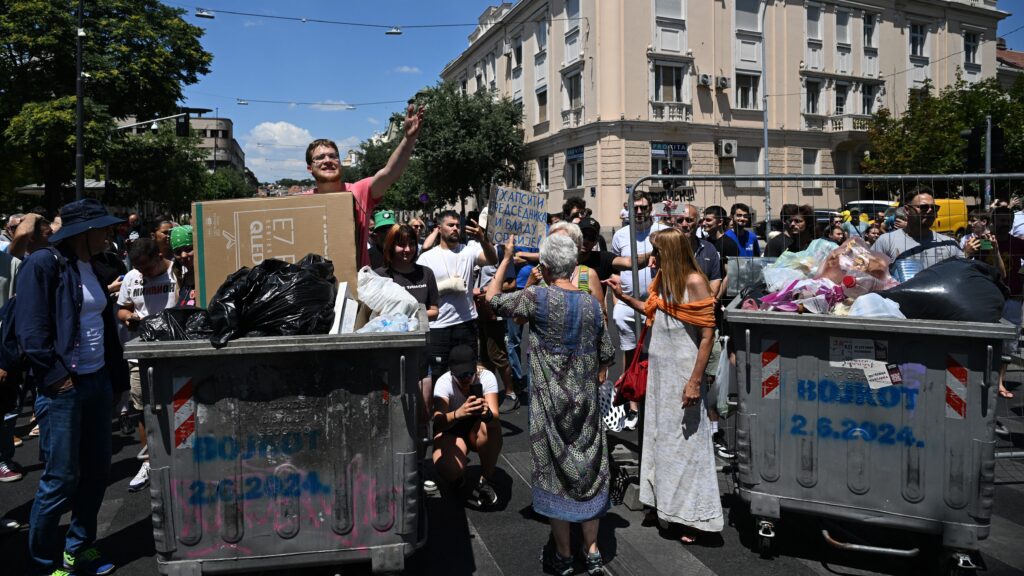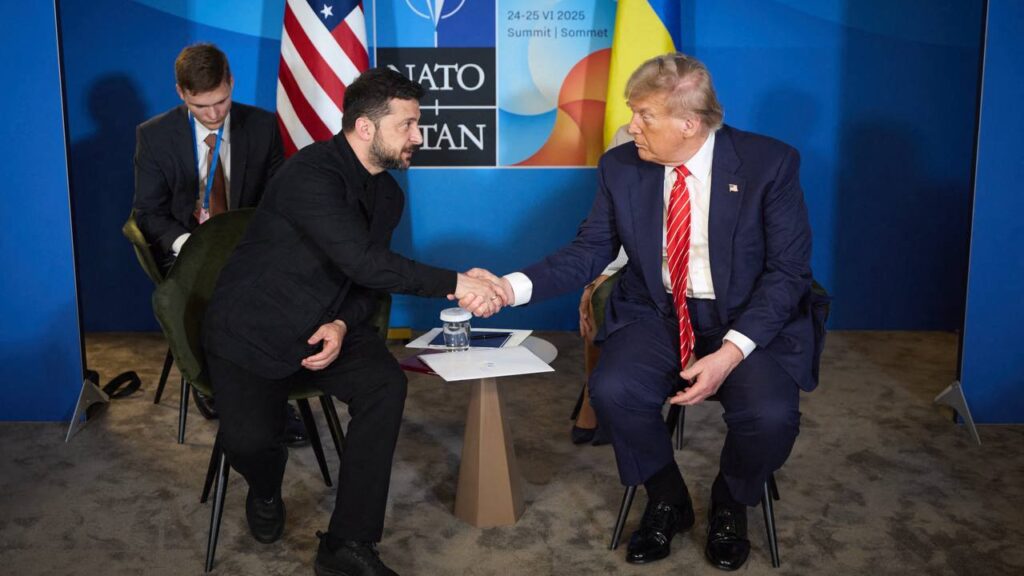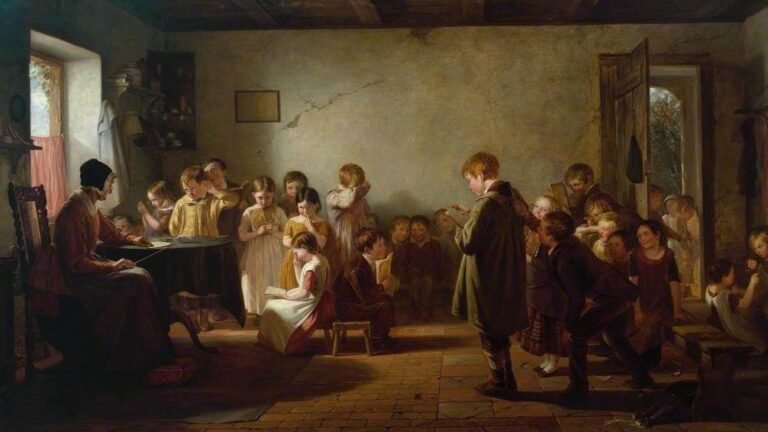100 years ago American and German relief saved the Soviet Union from ‘extinction’
It was exactly 100 years ago, in the first months of 1922, that one of the worst disasters in human history, the Soviet-Russian “Povolzhye famine,” reached its worst point. But this series of events, even crueller than the horrors of the First World War, was in fact only one climax in a half-century of unimaginable suffering for the Russian-Soviet people: the “Great Famine” of 1891 prepared the way for the fall of the Tsarist regime; the “Holodomor” of 1931-32 became a painful historical disaster for the Ukrainian people, while the famine of 1946-47 prolonged the trauma of the Second World War.
‘In Russia, hunger is in fact a chronic disease, an aggravation of permanent malnutrition.’ This very apt observation was made in the early years of the 20th century by a Moscow professor, Lev Tarasevich. Tarasevich was a biologist and immunologist who played a major role in the spread of vaccines in Russia and thus had a precise knowledge of the health of Russian citizens.
According to Tarasevich and other experts, the dramatic experience of starvation in Russia had been part and parcel of Russian existence for centuries. According to some social psychologists, this was one of the main reasons for the resignation and alcoholism that characterised the Russian people. In addition, starvation trends continually worsened up until the first half of the 20th century: from the 11th to the 16th century, an average of eight failed harvests were recorded every hundred years. Later, in the 18th century alone, for example, there were as many as 34 cases of particularly bad harvests in Russian agriculture, and in the 19th century there were even more. The situation became outright tragic in the last decade of the 19th century. In another eloquent expression by Tarasevich –made a few years before the First World War– the Russian people suffered from ‘essentially uninterrupted starvation’ until ‘the 1890s.’[1] In most cases the main cause of these agricultural crises that took a tragic turn was sudden drought, but in many cases military conflicts also played a role.
However, from the 1890s to the end of the Second World War, Russian (Soviet) famines caused devastation unprecedented in human history, and they were also linked to politics in a special way.
The Russian famine of 1891-1892: The beginning of the fall of Tsarism
The tragedy occurred under rather controversial historical circumstances: the last two decades of the 19th century saw a clear increase in grain production
In later times, historians came to the conclusion that the famine of 1891 was the beginning of the fall of the Russian Empire, or at least an important prelude to it. In retrospect, the tragedy occurred under rather controversial historical circumstances: although harvesting was a failure for Russian agriculture in many years of the 19th century, the last two decades of the century saw a clear increase in grain production (33.95 million tons in 1883, 49.54 million tons in 1899).[2] In addition, the Russian Tsarist regime introduced a food supply system in the 17th century, different from the Chinese and British models, with the explicit aim of feeding the needy during bad agricultural seasons (the decrees of Peter I aiming to help those in need marked the beginning of the new system, however, the Tsar’s measures were irregular and unnecessarily draconian). A major breakthrough came with Alexander I’s major reform in 1822, under which state officials and the nobility were obliged to help the poor during crop failures. The reform also gave the provinces greater freedom to establish funds and grain stores.
It is also important to note that extreme weather alone cannot be cited as the sole cause for the famine. In fact, in 1890, frost arrived in Russia very early, in October, and there was little snow in the winter months to protect the land. The average temperature in Russia was minus 20-25 degrees Celsius, but in some areas it was minus 30-40 degrees. The severe cold was followed by an extremely dry summer.
‘Here we are getting ready to go hungry. The peasants’ winter crops have failed completely… The situation is one of the utmost seriousness and demands immediate aid,’ wrote months later, in the summer of 1891, Baron Vorontsov-Dashkov to the Emperor Alexander III. The signs of disaster were clear by then: in 1891 grain harvest had fallen by 20-30 per cent, while that of rye, the peasants’ staple food, had dropped by 70 per cent (!) compared to normal. ‘So far we have spoken of crop failure, but not of famine; and we should be aware of the distinction between these two words. A nation can suffer one or even a series of bad harvests, and not experience famine,’ wrote Richard G. Robbins.[3]
Merciless taxation, an emphasis on heavy exports of grain, and overpopulation, all imposed upon a primitive system of agriculture, had paved the way for disaster. ‘The peasants’ consumption of grain had fallen from nineteen poods per capita in the seventies to sixteen poods at the end of the eighties,’ wrote George S. Queen in his analysis.[4]
Two key factors are worth underscoring: the drastic impoverishment of the peasantry and the forced export of grain by the tsarist regime, which also highlighted the corruption of the state bureaucracy. The impoverishment of the peasantry and the export-oriented economic policy resulted in warehouses running empty, so the Russian aid system, among its other shortcomings, was not prepared for such a sharp downturn. The Russian leadership did not handle rumours well either, with a communication strategy that tended to increase tensions. For example, the Russian press’s deliberate avoidance of the word “golod” (famine) only served to whip up sentiments.
The famine claimed the lives of hundreds of thousands of Russians (statistics recorded 350-400,000 deaths), but the actual figures may have been even higher, because the famine also exacerbated epidemics – it is no coincidence that a cholera epidemic soon killed another 100,000 people.
If we adopt Lev Tarasevich’s point of view, this famine was not the end but the beginning of perhaps the gravest series of humanitarian crises in Russia (and later in the Soviet space): the First World War, then the Civil War, the Soviet reign of terror, the “Great Famine,” the Holodomor, the Second World War and the last, largest famine, the one in 1946-47 plunged the Russian people into misery.
The famine also made the relationship between the Russian Tsar and the people bitter, as symbolised by Lev Tolstoy’s criticism of the Tsar, who, despite his Christian faith, had also turned against the Orthodox Church over the famine.
The “Great Famine” of 1921-1922
The famine of 1891, however, paled in comparison to the horrors of the “Great Soviet Famine” that followed the First World War in terms of the number of victims. The date of this famine is difficult to pin down. Some say it actually began in 1919, but most historical sources put it at 1921. The situation became so dire that by April 1922, according to some estimates, an inconceivable 35 to 40 million people were starving in (Soviet) Russia and Ukraine combined.
The reality was that, after the “small” famine of 1911, food supplies had already become scarce in Russia by 1914, the start of the First World War. The Russian Empire was struggling to supply even its army with food. This was due to the loss of export revenues, which increased food prices, but other major problems included the rise of corruption and speculation, the disintegration of the infrastructure network and the growing difficulties of the Russian administration during the war. Famine was already a reality for the poor in Petrograd and Moscow in 1916. In fact, this situation prepared the ground for the Russian Revolution in 1917:
‘The March Revolution which toppled the Czar from his throne began with women and workmen rioting for “bread and herrings.” Then came strikes inspired not by political ideas, but by the shortage of bread,’ wrote Harold Fisher.[5]
Since the Bolsheviks, who came to power after the October Revolution, also had problems feeding Russian citizens, their reign almost ended the same way as the Tsarist era had ended a few months earlier. Russia’s predicament was already known during the peace negotiations that ended the war. The future US President, Herbert Hoover, who at the time was head of the US Food Administration, had devised a plan to supply food to Central and Eastern Europe, but it failed in the face of a now Bolshevik Russia (not least because of the Bolshevik leadership’s dismissive response, fearful of the propaganda effect of aid shipments from the Western capitalists). Note: Lenin had already opposed Western aid during the famine of 1891-92 because he wanted the Tsar’s downfall.
These were the indirect precursors to the “Great Famine” of 1921, also known as the “Povolzhye Famine” (the famine around the Volga River), which proved to be one of the greatest humanitarian disasters in human history. ‘The main reason for the famine is simply that a terrible drought has developed in the area where the famine is now raging,’ wrote the famous polar explorer and Nobel Peace Prize winner Fridtjof Nansen.[6] In addition to the drought, Nansen cited the civil war and international blockades as the main reasons that prevented the country from importing machinery essential to its agricultural economy. Another important reason, according to Nansen, was the Soviet system, which collected the surplus from the peasants and therefore had a negative impact on the peasants’ motivation.
The international community’s attention was drawn to the issue by Maxim Gorky in the summer of 1921: ‘The calamity threatens starvation to millions of Russian people. (…) Gloomy days have come for the country of Tolstoy, Dostoevsky, Mendeleev, Pavlov, Mussorgsky, Glinka and other world-prized men and I venture to trust that the cultured European and American people, understanding the tragedy of Russian people, will immediately succour with bread and medicines.’[7]
The death toll rose rapidly, but the exact figures are still disputed to this day. Most historians accept that around 5 million people died between 1921 and 1922 due to famine and starvation epidemics. However, other estimates put the death toll much higher, with some sources, for example, putting the death toll at 9 million.[8] In any case, reports at the time indicated extreme devastation, with 1 million children dying at a very rapid rate in the Tatar Republic alone by the end of 1921. Infant mortality and the number of miscarriages were enormous. The weakened population suffered from various epidemics (malaria, tuberculosis, diphtheria, etc.), which left horrendous scars on their bodies.
People were forced to eat their pets, even dogs, cats and rats. In famine-stricken areas, for example, the number of horses fell by 80 to 90 per cent. But the real horror was the emergence of necrophagy and anthropophagy, or cannibalism. These horrible cases have been documented and photographed, and these horrors go beyond the tragedies of the First World War. It is impossible to illustrate them in words – they are among the most indescribable events in human history.
The Bolshevik leadership was only able to control the situation after Lenin agreed to allow Western aid into Russia. Had this American, German and British aid not arrived, the survival of the Soviet Union would probably not have been possible, and 10-20 million more people would have lost their lives. It was typical of Lenin’s political career and character that he tried to use the famine as a propaganda tool against Christianity and the Orthodox Church.
The Kremlin –or the Bolsheviks– took severely hurtful measures against Ukraine already during this famine (for example, Ukrainian grain was transferred to Russian territory), and the famine continued in many Ukrainian areas even in the first half of 1923.
The Holodomor
Karl Marx was the first to state that violence might be necessary for Communist takeover. He wrote that ‘there is only one means to shorten, simplify and concentrate the murderous death throes of the old society and the bloody birth pangs of the new, only one means – revolutionary terrorism.’[9] Lenin himself stressed the necessity of violence: ‘In principle, we have never rejected and cannot reject terror.’[10] The Bolsheviks then put this concept into practice.
The so-called kulak deprivation, also known as the Holodomor in Ukraine, resulted in an unprecedented death toll: at least four million Ukrainian peasants fell victims
After Lenin’s death, his successor, Stalin, succeeded in extending the reign of state terror to a barely conceivable extent. Forced collectivisation led the Soviet state, proclaimed in December 1922, to war against the peasants. More than two million peasants were deported, six million starved to death and hundreds of thousands died in the deportations. The high point of the terror was the famine of 1932-33, deliberately provoked by the authorities to break the peasants’ resistance. The so-called kulak deprivation, also known –less euphemistically– as the Holodomor in Ukraine, resulted in an unprecedented death toll: at least four million Ukrainian peasants fell victims (between 1930 and 1933, between 7 and 9 million people altogether died in the Soviet Union in connection with the famine, and the famine in Kazakhstan had already begun in 1929). Since many Cossacks fought alongside the Tsarist bourgeois army, they were also targeted by the Bolsheviks, who therefore pursued a brutal policy against them. The announcement of a programme of “decossackisation” led to the execution of tens of thousands of Cossacks.
Starvation forced people once again to eat their livestock and later grass, bark and leaves. During the Holodomor, cannibalism became almost a daily occurrence in Ukraine, very often within families. In more than one case, parents killed their own children and used the meat as food.[11] As late as 1939, there were about 1,000 people in prison for cannibalism in Ukraine.
Many starving people died in terrible agony on the streets of towns and cities, and because of the Soviet state ban, the authorities could not help them. In fact, Soviet requisition brigades even committed barbaric cruelties against starving people, rape and murder were not uncommon. At the time many officials became disillusioned with the disingenuous ideology of the Soviet system – some of them could not cope mentally and committed suicide. Some who defied orders and tried to help were executed.
The Last (?) Great Famines of the Communist Barracks
It is a little known fact that in 1946, after the Second World War, another famine broke out in the Soviet Union, killing between 1.5 and 2 million people. Even after WWII, Herbert Hoover carried out studies during his international travels to find out which countries were at risk of a humanitarian disaster because of the threat of famine. ‘While we could classify the Soviet satellite states, we could not classify Russia proper, for that country gave out no information. However, we knew what the Russian ration was in most cities and that the Russians had seized huge amounts of food in their invasion of Eastern Europe, Mongolia, and Manchuria. We believed that Russia proper was in no critical need, and even hoped that, in view of the gigantic amounts they had plundered, they might help out with some supplies for the hungry,’ wrote Hoover later in his memoirs.[12]
Because of the war, agriculture in Russia was already in a poor state, and in addition, in the spring of 1946, there was little rainfall, so harvests were below normal. However, some analysts believe that Stalin’s policies were the real cause of the famine. One reason was that after the war, the Soviet Union placed great emphasis–an exaggerated emphasis– on agricultural exports, hoping to exert influence in international politics. However, according to V.F. Zima’s analysis, the famine was deliberately brought about by the Soviet government because it feared that political opposition in the Soviet Union would intensify after the war.[13]
This was one of the last great famines of the Communist bloc to date, but it was followed by the “Great Chinese Famine,” which led to the starvation of tens of millions of people. In China, communist policies also played a decisive role. According to Nicholas Ganson, however, apart from wars and bad weather conditions, the main reason is not necessarily the ideological content of a particular policy, as shown by the almost continuous famine in Russia since 1891, before the Soviet Union was even formed:
‘A glance at famine in historical and global perspective suggests that large-scale famines often result from a confluence of natural factors and ideologies that ignore local conditions. (…) from a global perspective, the famines of the last two centuries demonstrate that blind adherence to political and economic ideologies–whether Communist, capitalist or otherwise–that unbendingly place means at the service of the end generate suffering and misery and cannot be morally justified,’ wrote Ganson.
[1] Prof. Dr. Peter Mühlens, Die russische Hunger- und Seuchenkatastrophe in den Jahren 1921-1922, Berlin, Springer, 1923, pp. 3-4.
[2] Linda Edmondson and Peter Waldron (eds.), Economy and Society in Russia and the Soviet Union, 1860-1930: Essays for Olga Crisp, London, Palgrave Macmillan, p. 45.
[3] Richard G. Robbins, Famine in Russia, 1891-1892: The Imperial Government Responses, New York, Columbia University Press, 1975, p. 3.
[4] George S. Queen, ‘American Relief in the Russian Famine of 1891-1892,’ The Russian Review, vol. 14, 1955, p. 140.
[5] H. H. Fisher, The Famine in Soviet Russia. 1919-1923, New York, The MacMillan Company, 1927, p. 6.
[6] Dr. Fritdjof Nansen, ‘An das Gewissen der Völker!’ Rede vor der Konferenz des Internationalen Arbeitsamts beim Völkerbund in Genf am 12. November 1921, Auslandskommitee (Hrg.) p. 5.
[7] Maxim Gorky, ‘Appeal for Relief,’ American Relief Administration, Bulletin, no. 16, 1921, p. 2.
[8] Stephen Devereux, ‘Famine in the Twentieth Century,’ IDS Working Paper, issue 105, 2000, p. 5.
[9] Karl Marx, Friedrich Engels, Werke, Berlin, Dietz Verlag, 1955, p. 455.
[10]‘Die Katastrophe des Kommunismus. Von Marx bis Gorbatschow,’ Der Spiegel Spezial, Hamburg, 1991, p. 57.
[11] R. W. Davies and Stephen G. Wheatcroft, The Years of Hunger. Soviet Agriculture 1931-1933, New York, Palgrave, p. 421.
[12] Herbert H. Hoover, An American Epic: The Guns Cease Killing and the Saving of Life from Famine Begins, 1939–1963, Chicago, Henry Regnery C., 1964, p. 119.
[13] Nicholas Ganson, The Soviet Famine of 1946-1947 in Global and Historical Perspective, New York, Palgrave, 2009, p. XV.

